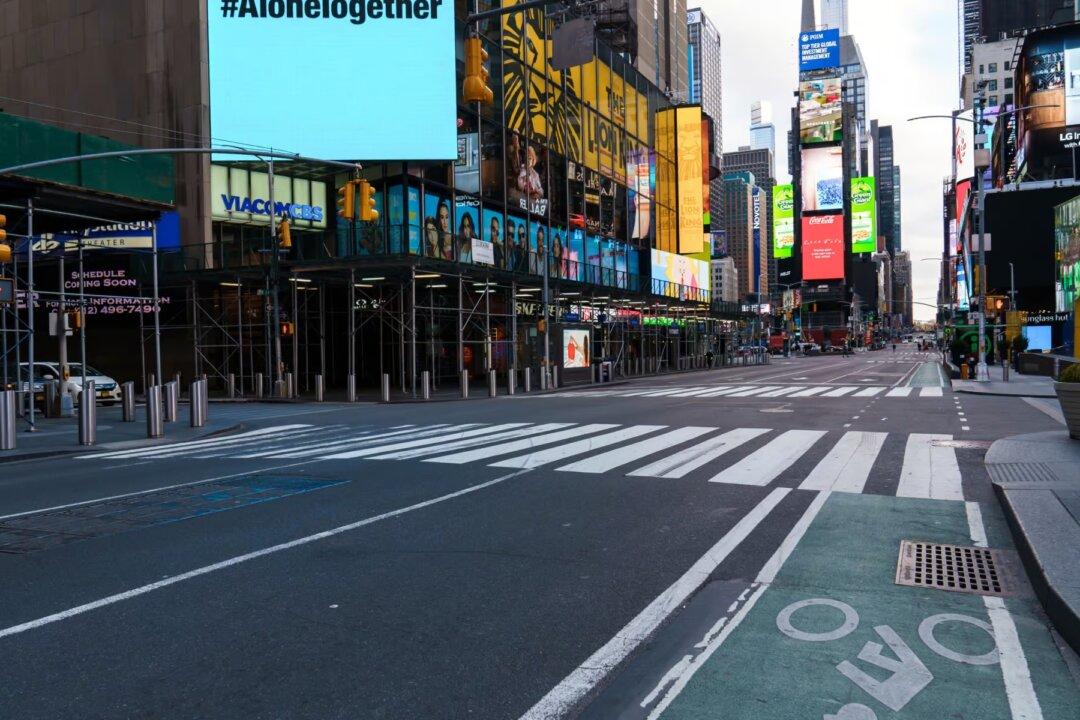Lockdowns were always an impossible means of pandemic management. We knew that from a century ago. It was not even controversial. The orthodoxy in public health survived even up to a few weeks before the lockdowns began.
Out of nowhere, settled wisdom was completely upended. Suddenly, as if straight from Orwell, lockdowns became “common sense mitigation measures.” Meanwhile this country and most other countries around the world were being utterly tortured by a crazed bureaucracy determined to master the microbial kingdom by bullying people and wrecking their businesses, schools, churches, and lives.
If nothing else, this era proves for this generation the astonishing capacity of the human mind to undertake utterly insane policy experiments on a grand scale without the slightest evidence that they could ever succeed, even while they trample on all established norms of rights and liberties.
This is a revelation, at least to me. We’ve never seen anything like it in our lives. Speaking personally, this reality utterly shattered a worldview that I didn’t know I held: namely, I genuinely believed humanity was on a path, even an inevitable one, toward greater knowledge, learning, and the embrace of freedom. After March 2020, I and everyone discovered otherwise. That was both intellectually and psychologically traumatic for me and for millions of others.
We are still figuring out how and why all this happened. In order to do that, we at least need a consensus that this was a terrible mistake. Even three and a half years later, we haven’t even had that. To be sure, it is very difficult to find defenders of lockdowns. They have mostly evaporated into the hedges. Even those who pulled the trigger and defended them at the time are all denying that they had anything to do with them. My favorite: we never had a real lockdown.
Regardless, the mere appearance of the Nocera/McLean article takes us quite a distance to where we need to be at least for now. Yes, it is 42 months late, but we take progress wherever we can find it.
“One of the great mysteries of the pandemic is why so many countries followed China’s example. In the U.S. and the U.K. especially, lockdowns went from being regarded as something that only an authoritarian government would attempt to an example of ‘following the science.’ But there was never any science behind lockdowns — not a single study had ever been undertaken to measure their efficacy in stopping a pandemic. When you got right down to it, lockdowns were little more than a giant experiment.”
“Unfortunately, there is no shortage of policy failures of which to take stock. We do an accounting of many of them in our new book, The Big Fail. But one that looms as large as any, and remains in need of a full reckoning in the public conversation, is the decision to embrace lockdowns. While it is reasonable to think of that policy (in all its many forms, across different sectors of society and the 50 states) as an on-the-fly experiment, doing so demands that we come to a conclusion about the results. For all kinds of reasons, including the country’s deep political divisions, the complexity of the problem, and COVID’s dire human toll, that has been slow to happen. But it’s time to be clear about the fact that lockdowns for any purpose other than keeping hospitals from being overrun in the short term were a mistake that should not be repeated. While this is not a definitive accounting of how the damage from lockdowns outweighed the benefits, it is at least an attempt to nudge that conversation forward as the U.S. hopefully begins to recenter public-health best practices on something closer to the vision put forward by [Donald] Henderson.”
You will notice the hedge here: “for any purpose other than keeping hospitals from being overrun.” Another way to put it: lockdowns are fine for rationing healthcare. There is reason to emphatically disagree. Hospitals wildly exaggerated how overrun they were. There were two hospitals in New York boroughs that had high traffic, but this was due to exigencies of ambulance contracts. The rest were largely empty as they were around the country. This was due to lockdowns that restricted medical services to COVID only even in places where there was no community spread, plus public fear of leaving the home.(I had a conversation two weeks ago with the head of a company that sells ventilators and diagnostic equipment to hospitals in New York. He said that in the early months of lockdown, he had never seen hospitals so empty. This was confirmation to me of what we already knew.)
This whole subject needs some serious unpacking. To my knowledge, we still don’t know where the edicts came from to lock down hospitals all over the country. That is a research project all its own. In other words, carving out an exception for “overrun” hospitals is deeply dangerous: it only incentivizes the lockdowners next time to game the reporting in a way that is favorable to more lockdowns. This is precisely what happened in the UK, where the main and even only justification for lockdowns was the rationing of healthcare services.
So this proviso is actually dangerous in every way.
“As the United States gains more and more distance from the COVID pandemic, the perspective on what worked, and what did not, becomes not only more clear, but more stark. Operation Warp Speed stands out as a remarkable policy success. And once the vaccines became available, most states did a good job of quickly getting them to the most vulnerable, especially elderly nursing-home residents.”
The perspective is what we might be called the exogenous theory of the jab. The idea is that the lockdowns and masking and the whole apparatus of disease control exists in a separate system of ideological confusion, whereas the vaccine came from the outside to intervene but otherwise was not part of the planning apparatus.I certainly once shared this view. About the vaccine in 2020, rumored to come along at any point, I care next to nothing about it. I assumed it would be useless because my reading on the topic showed that a coronavirus is in the class of pathogens against which one cannot vaccinate.
That aside, there is a real danger associated with attempting to vaccinate your way out of pandemic. You can create the conditions that drive mutations even more, and introduce the prospect of what’s called original antigenic sin. What I had not anticipated was that the shot would be actually deeply dangerous, much less that it would be mandated.
The more research we do, the less plausible this theory of exogenous intervention is. From the very outset, the vaccine was planned and a huge part of the entire pandemic control agenda. And consider this question. Would it have been possible to drive the emergency use authorization, indemnify the results from any liabilities, retain patents, elicit tax funds for development, plus push innumerable institutions to mandate the shots in absence of the national emergency, the frenzy, the demoralization, and the population-wide panic? I’ve asked many people this question, and the answer is always: no way.
There is no world in which Warp Speed would have taken hold absent the lockdowns. They are all part of the same system and policy. So, yes, it is strange for our authors to isolate the vaccine as good in the context of everything else which they label bad. Emergencies elicit bad actors and bad actions. They are all of a piece.
At this point, most of us have become jaded about media and messaging from mainstream sources. So an easy tag to put on this important article in New York Magazine is: limited hangout. Let’s admit failure where possible, concede mistakes and disasters along the way, even while sneaking in an approving and passing remark about the thing which in the end is the most important part of the whole epoch, namely the vaccine itself. That way, the rubes will be satisfied that there is some accountability going on, even while the biggest and deepest caper of them all gets away without a scratch.
There is no need here to chronicle the innumerable and now widely known failure of the shot. In any case, among those who still want to claim it to be a great success, their messaging is not long for this world. The evidence is too overwhelming, and felt in every part of society the world over.
What we have with this book and article is an important step. It is just one step. Lockdowns utterly shattered the protocols of public health, settled law, and freedom itself all over the world. They wrecked myriad institutions, wrought an incredible economic and cultural crisis, demoralized the whole population, and built up a leviathan of command and control that is not only not backing down but growing ever more. Far more will be required to utterly and completely repudiate the methods and madness of our epoch.







